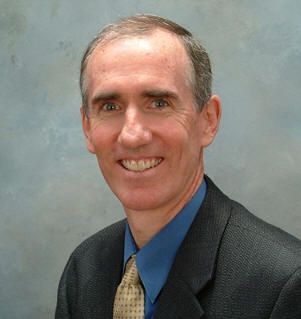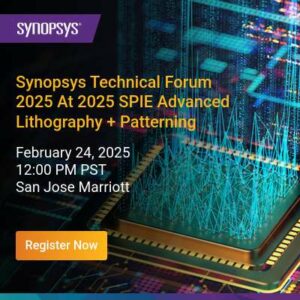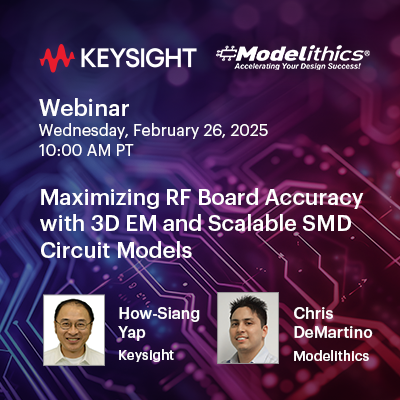
- This event has passed.
Failure and Yield Analysis
December 2, 2024 - December 5, 2024

Failure and Yield Analysis is an increasingly difficult and complex process. Today, engineers are required to locate defects on complex integrated circuits. In many ways, this is akin to locating a needle in a haystack, where the needles get smaller and the haystack gets bigger every year. Engineers are required to understand a variety of disciplines in order to effectively perform failure analysis. This requires knowledge of subjects like: design, testing, technology, processing, materials science, chemistry, and even optics! Failed devices and low yields can lead to customer returns and idle manufacturing lines that can cost a company millions of dollars a day. Your industry needs competent analysts to help solve these problems. Failure and Yield Analysis is a 4-day course that offers detailed instruction on a variety of effective tools, as well as the overall process flow for locating and characterizing the defect responsible for the failure. This course is designed for every manager, engineer, and technician working in the semiconductor field, using semiconductor components or supplying tools to the industry.
By focusing on a Do It Right the First Time approach to the analysis, participants will learn the appropriate methodology to successfully locate defects, characterize them, and determine the root cause of failure.
What Will I Learn By Taking This Class?
Participants will learn to develop the skills to determine what tools and techniques should be applied, and when they should be applied. This skill-building series is divided into three segments:
- The Process of Failure and Yield Analysis. Participants will learn to recognize correct philosophical principles that lead to a successful analysis. This includes concepts like destructive vs. non-destructive techniques, fast techniques vs. brute force techniques, and correct verification.
- The Tools and Techniques. Participants will learn the strengths and weaknesses of a variety of tools used for analysis, including electrical testing techniques, package analysis tools, light emission, electron beam tools, optical beam tools, decapping and sample preparation, and surface science tools.
- Case Histories. Participants will identify how to use their knowledge through the case histories. They will learn to identify key pieces of information that allow them to determine the possible cause of failure and how to proceed.
Course Objectives
- The course will provide participants with an in-depth understanding of the tools, techniques and processes used in failure and yield analysis.
- Participants will be able to determine how to proceed with a submitted request for analysis, ensuring that the analysis is done with the greatest probability of success.
- The course will identify the advantages and disadvantages of a wide variety of tools and techniques that are used for failure and yield analysis.
- The course will offer a wide variety of video demonstrations of analysis techniques, so the analyst can get an understanding of the types of results they might expect to see with their equipment.
- Participants will be able to identify basic technology features on semiconductor devices.
- Participants will be able to identify a variety of different failure mechanisms and how they manifest themselves.
- Participants will be able to identify appropriate tools to purchase when starting or expanding a laboratory.
Course Objectives
- The course will provide participants with an in-depth understanding of the tools, techniques and processes used in failure and yield analysis.
- Participants will be able to determine how to proceed with a submitted request for analysis, ensuring that the analysis is done with the greatest probability of success.
- The course will identify the advantages and disadvantages of a wide variety of tools and techniques that are used for failure and yield analysis.
- The course will offer a wide variety of video demonstrations of analysis techniques, so the analyst can get an understanding of the types of results they might expect to see with their equipment.
- Participants will be able to identify basic technology features on semiconductor devices.
- Participants will be able to identify a variety of different failure mechanisms and how they manifest themselves.
- Participants will be able to identify appropriate tools to purchase when starting or expanding a laboratory.
Course Outline
Day 1
- Introduction
- Failure Analysis Principles/Procedures
- Philosophy of Failure Analysis
- Flowcharts
- Gathering Information
- Package Level Testing
- Optical Microscopy
- Acoustic Microscopy
- X-Ray Radiography
- Hermetic Seal Testing
- Residual Gas Analysis
- Electrical Testing
- Basics of Circuit Operation
- Curve Tracer/Parameter Analyzer Operation
- Quiescent Power Supply Current
- Parametric Tests (Input Leakage, Output voltage levels, Output current levels, etc.)
- Timing Tests (Propagation Delay, Rise/Fall Times, etc.)
- Automatic Test Equipment
- Basics of Digital Circuit Troubleshooting
- Basics of Analog Circuit Troubleshooting
Day 2
- Decapsulation/Backside Sample Preparation
- Mechanical Delidding Techniques
- Chemical Delidding Techniques
- Backside Sample Preparation Techniques
- Die Inspection
- Optical Microscopy
- Scanning Electron Microscopy
- Photon Emission Microscopy
- Mechanisms for Photon Emission
- Instrumentation
- Frontside
- Backside
- Interpretation
- Electron Beam Tools
- Voltage Contrast
- Passive Voltage Contrast
- Static Voltage Contrast
- Capacitive Coupled Voltage Contrast
- Introduction to Electron Beam Probing
- Electron Beam Induced Current
- Resistive Contrast Imaging
- Charge-Induced Voltage Alteration
- Voltage Contrast
Day 3
- Optical Beam Tools
- Optical Beam Induced Current
- Light-Induced Voltage Alteration
- Thermally-Induced Voltage Alteration
- Seebeck Effect Imaging
- Electro-optical Probing
- Thermal Detection Techniques
- Infrared Thermal Imaging
- Liquid Crystal Hot Spot Detection
- Fluorescent Microthermal Imaging
- Chemical Unlayering
- Wet Chemical Etching
- Reactive Ion Etching
- Parallel Polishing
Day 4
- Analytical Techniques
- TEM
- SIMS
- Auger
- ESCA/XPS
- Focused Ion Beam Technology
- Physics of Operation
- Instrumentation
- Examples
- Gas-Assisted Etching
- Insulator Deposition
- Electrical Circuit Effects
- Case Histories
Instructional Strategy
Our courses are dynamic. We use a combination of instruction by lecture, problem solving, and question/answer sessions to give you the tools you need to excel in the failure analysis process. From the very first moments of the seminar until the last sentence of the training, the driving instructional factor is application. The course notes offer hundreds of pages of reference material that the participants can apply during their daily activities.
Our instructors are internationally recognized experts. Our instructors have years of current and relevant experience in their fields. They’re focused on answering your questions and teaching you what you need to know.
Our analysis instructional videos help you visualize the process. Failure and Yield Analysis is a visual discipline. The ability to identify nuances and subtleties in images is critical to locating and understanding defects. Many tools output video images that must be interpreted by analysts. Our videos allow you to directly compare material you’ll learn with your actual analysis work.
Instructor Profile
Christopher Henderson, President of Semitracks

Christopher Henderson received his B.S. in Physics from the New Mexico Institute of Mining and Technology and his M.S.E.E. from the University of New Mexico. Chris is the President and one of the founders of Semitracks Inc., a United States-based company that provides education and semiconductor training to the electronics industry.
From 1988 to 2004, Chris worked at Sandia National Laboratories, where he was a Principal Member of Technical Staff in the Failure Analysis Department and Microsystems Partnerships Department. His job responsibilities have included failure and yield analysis of components fabricated at Sandia’s Microelectronics Development Laboratory, research into the electrical behavior of defects, and consulting on microelectronics issues for the DoD. He has published over 20 papers at various conferences in semiconductor processing, reliability, failure analysis, and test. He has received two R&D 100 awards and two best paper awards. Prior to working at Sandia, Chris worked for Honeywell, BF Goodrich Aerospace, and Intel. Chris is a member of IEEE and EDFAS (the Electron Device Failure Analysis Society).
At Semitracks, Chris teaches courses on failure and yield analysis, semiconductor reliability, and other aspects of semiconductor technology.













Will 50% of New High Performance Computing (HPC) Chip Designs be Multi-Die in 2025?